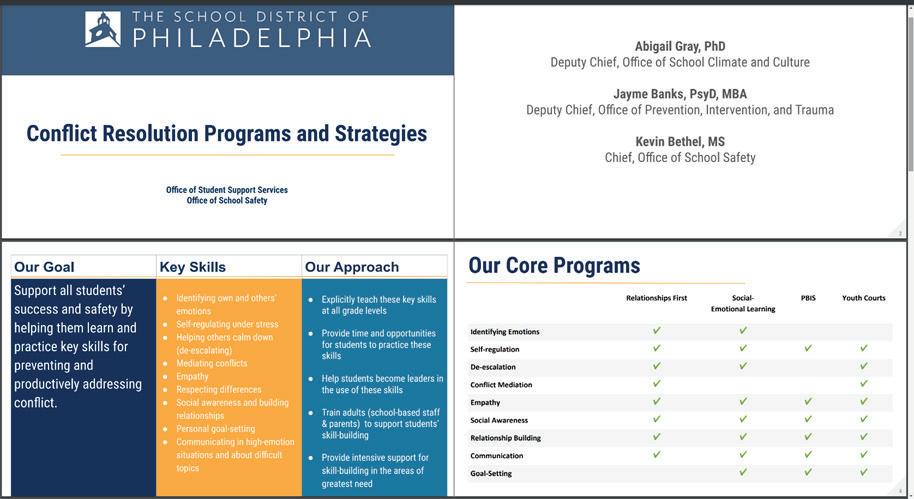Cure Violence, on the other hand, attempts to address violence before it happens by deploying people with past involvement in violence as credible messengers in a norm-changing campaign. The premise is that violence is “transmitted” from one individual to another through violent acts. The goal is to identify conflicts in the community and deescalate before anyone picks up a gun. Similarly, these “violence interrupters” arrive at crime scenes after shootings to attempt to prevent any retaliatory behavior by gathering information that might not be available to police. The Editorial Board. “The forgotten public health program that cut homicides by 30% in Philadelphia.” The Philadelphia Inquirer. September 1, 2019. Accessed on January 12, 2021. https://fusion.inquirer.com/opinion/editorials/philadelphia-gun-violence-homicide-cure-violence-ceasefire-20190901.html. The Cure Violence model takes a proactive approach, using mental health professionals and trained violence interventionists, not police officers, to help those who would otherwise handle conflict violently. The program helps them learn to better resolve conflicts and cope with trauma to prevent further violence. Currently, the Community Crisis Intervention Program uses similar methods to prevent gun violence in Philadelphia. Gun violence, and the trauma that stems from it, is not isolated to specific neighborhoods or schools, but rather trauma spreads across all areas of the City like “an infectious disease.”6 Evidence, from our own city, shows gun violence drops when children are provided tools to resolve conflict and manage trauma. All children, then, need to learn these skills. All Philadelphia students will benefit from social emotional learning and trauma-informed care. All children must have access to resources and programs implemented by professionals. The District presented information about their approach to trauma-informed care (slide below). Led by experienced professionals, SDP has started implementing “Healing Together,” a collaboration developed in partnership with teachers, counselors, principals, and local and national experts to offer mental health resources and social emotional learning to students and staff.
6 Dr. Reeves: Transcript pgs. 202-203.
6



